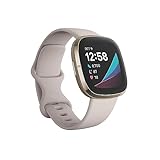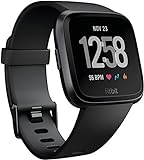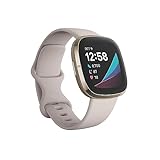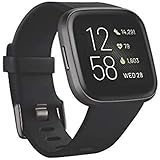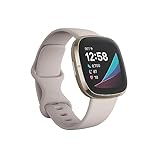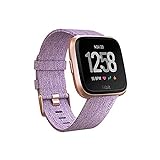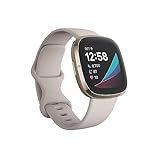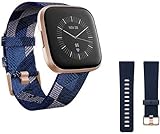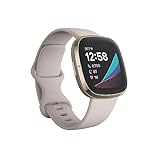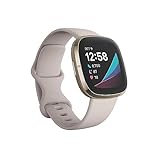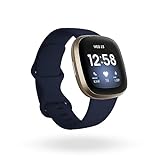Fitbit Sense vs Versa Lite - Where are the differences?
Where are the differences?
Let's have a closer look by comparing the differences between the two Wearable Sense* and Versa Lite* made by Fitbit.
Release Date
Both products were made in two consecutive years. The Fitbit Sense was first released in 2020. Consequently, the Fitbit Versa Lite from 2019 is older.
Display
You'll get a display with both devices. Here, both Wearable have an integrated color display. In both cases, there is a touch display. The display technology is the same with both devices, and have a AMOLED display. You only get an always-on display with the Sense.
Waterproof
Both, the Sense, as well as the Versa Lite are waterproof, and have no further difference in this feature. Both Wearable can be used under water in depths of up to 50 m. The Fitbit Sense can even track and record your swimming lanes.
Battery
The Fitbit Sense sports a longer battery runtime with 6 days. the Fitbit Versa Lite battery lasts merely for 4 days. Both devices take 2,0 hours to be fully charged.
GPS
An integrated GPS of the Wearable is in this case only available with the Fitbit Sense. GLONASS is only supported with the Sense. With both Wearable, you have the possibility to use Connected GPS. The devices will take the GPS data from your smartphone. The downside to this can be signal issues and having to carry your smartphone with you.
Heart Rate Monitor
A fitness watch without a heart rate monitor is basically useless and not advisable to buy. That's because your heart rate is one of the key elements of different calculations. For example, many devices without a heart rate monitor claim to count your calories burned too. That number will hardly be right without having access to your heart rate.
Comparing the Fitbit Sense and the Fitbit Versa Lite, both devices offer the heart rate monitor function and score in our books. On top of that, both will monitor your heart rate 24/7. Some devices only do that when you press a button, which is practically speaking rather useless.
Measured values
Only the Sense can track how many floors you've covered.
Both Wearable offer you the possibility to record your sleep time. On top of that, they also allow you to do a sleep analysis.
The Fitbit Sense stores the recorded data up to 7 days.
Bracelet
Being able to change your fitness watch band is a great advantage. You'll only have to worry about the color of the device itself, and not the color or material of its accompanying watch band. For pretty much every device, you can get cheap watch bands that will fit your device. You can make use of this advantage with both devices of this comparison.
Smarct functions
Getting call, text, or other notifications is a feature that both tools have. Often times, this feature is only possible with an Android device. iOS user can be left behind on this. The Sense can even play voice messages. On top of that, both devices allow you to send QuickReplies right on your watch. A microphone built into the Sense allows you to send voice recordings as replies.
With the Sense you can install apps und have more individual usage of your watch. That's an advantage compared to the Versa Lite. The interface, or the dial of your watch, can be changed with both, the Fitbit Sense , and the Fitbit Versa Lite.
Amazon (Alexa) voice control is supported with the Fitbit Sense, which is a comparitively small bonus that the Fitbit Versa Lite doesn't offer.
The device leading you through your workout is only supported with the Fitbit Sense. That's a big advantage compared to the Fitbit Versa Lite.
Contactless payment
Contactless payment is a highly useful and more in demand than ever technology. Many Wearable already offer it. Being able to do this from your wrist is even more convenient than using your smartphone or a credit card. There's a difference here between the two devices, as only the Fitbit Sense hooks you up with contactless payment technology. With the Sense, Fitbit Pay is being used.
